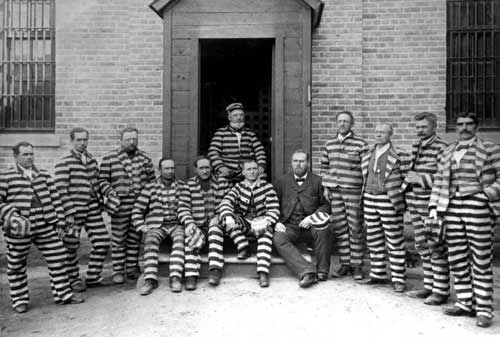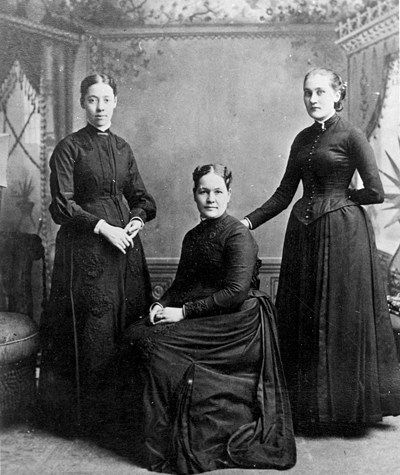In Short
Mormons began to openly practice polygamy, or having more than one spouse, in 1852. At this point, they lived in the far West, away from the reach of the federal government.
However, as the government’s influence and control began to expand farther west, the issue of polygamy and the Mormons became a hot political topic. It became so hot that the Republicans called slavery and polygamy the “twin relics of barbarism”—and accused Democrats of supporting both.
More of the story:
The strong arm of the law.

Private citizens and the government crusaded to end polygamy, mostly through laws. Congress passed a series of laws:
- The Morrill Anti-Bigamy Act of 1862 prohibited polygamy in the territories. It also limited the value of the land that the LDS church could own, among other things.
- The Poland Act of 1874 took away the LDS church’s power over the territory’s judicial system.
- The Edmunds Act of 1882 made polygamy a felony, prohibited “unlawful cohabitation,” and took away polygamists’ right to vote and hold political office.
- The Edmunds-Tucker Act of 1887 disincorporated the LDS church, allowed the government to seize church assets, punished offenders with large fines and prison, required wives to testify against husbands, and more.
Federal marshals arrested many men, who spent time in prison. Other polygamists went into hiding, including LDS church president John Taylor.
The church was backed into a corner.
Perhaps more serious than the imprisonment of individuals, these laws threatened to bankrupt the LDS church. Polygamy was also preventing Utah from becoming a state.

In 1890 the Supreme Court ruled that the government could seize church property—including temples. With no options left, church president Wilford Woodruff issued a “Manifesto” advising Mormons not to take part in any illegal marriages.
This Manifesto put the rest of the country at ease. Utah could then move toward statehood, which it achieved in 1896.
Saying it more emphatically.
The Manifesto was not very clear, especially for those already in plural marriages. And despite the church’s advice, many people continued to enter into polygamy.
When Americans realized polygamy was continuing, the controversy heated up again. The United States Senate refused to seat Reed Smoot, a Mormon apostle who had been elected senator. The long debate over Smoot was big news all over the country.
In 1904 church president Joseph F. Smith issued a more specific and binding decree about polygamy. Among other things, the decree stated that anyone caught entering or performing a plural marriage after 1904 would be subject to excommunication.
Today the practice of polygamy in the United States is continued by groups that are not associated with the LDS church. They are known as FLDS groups, meaning Fundamental Latter-day Saints.